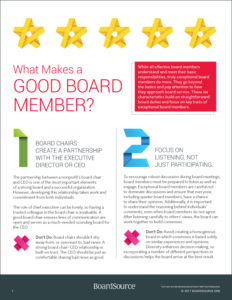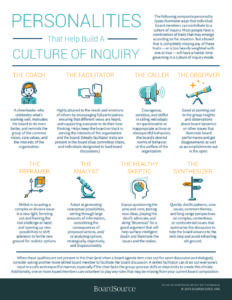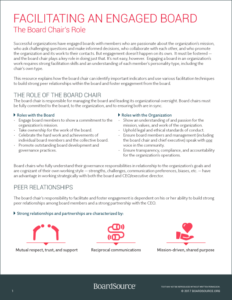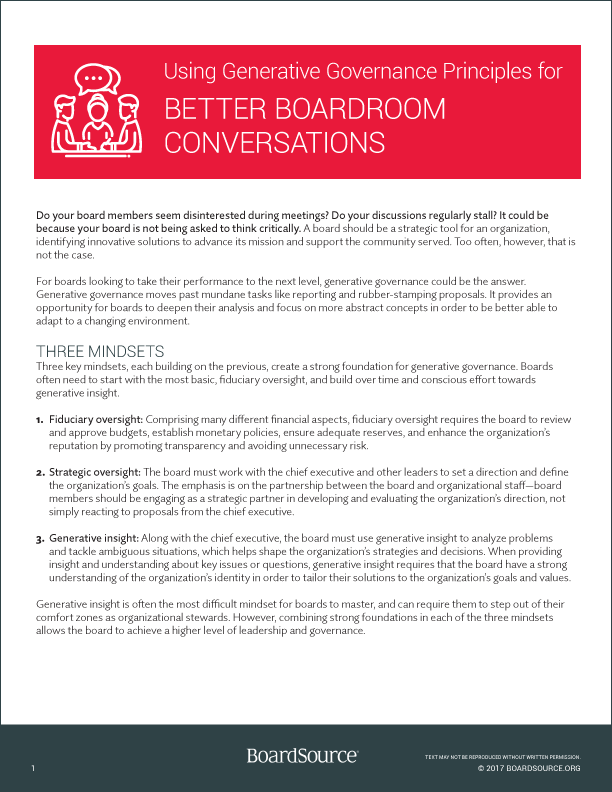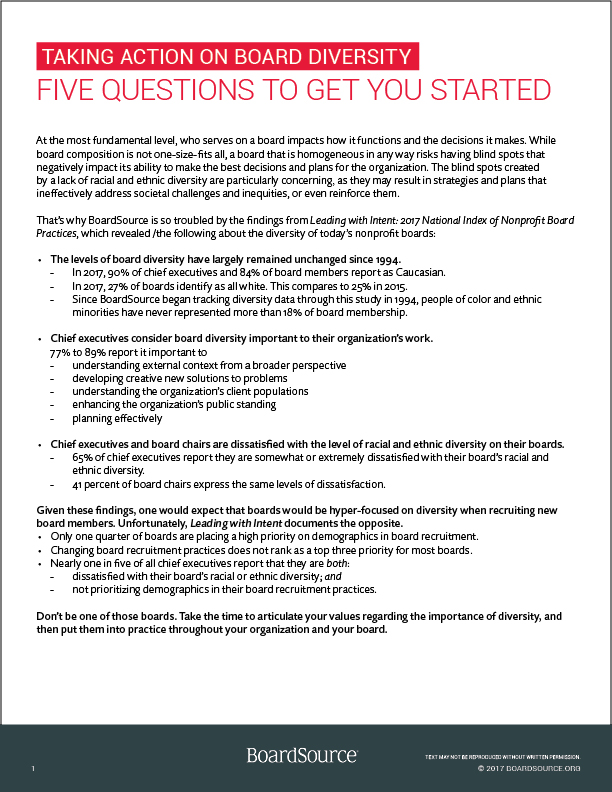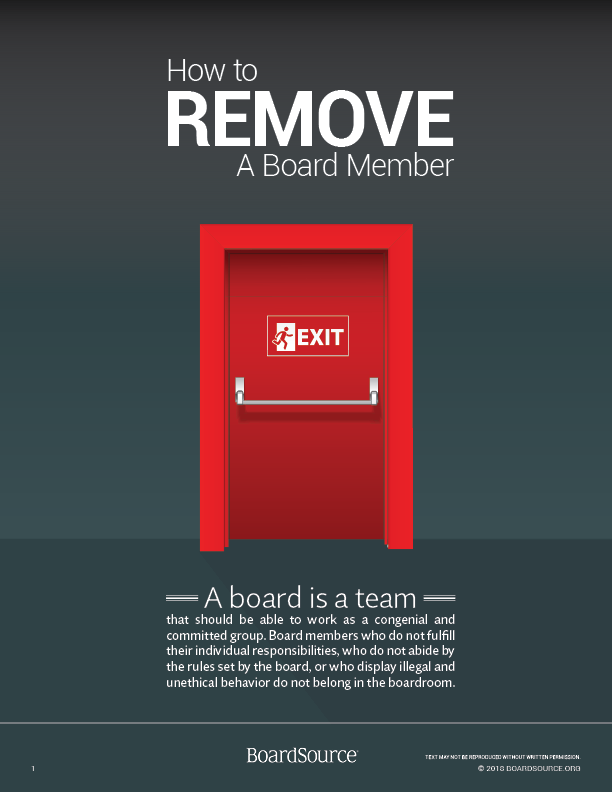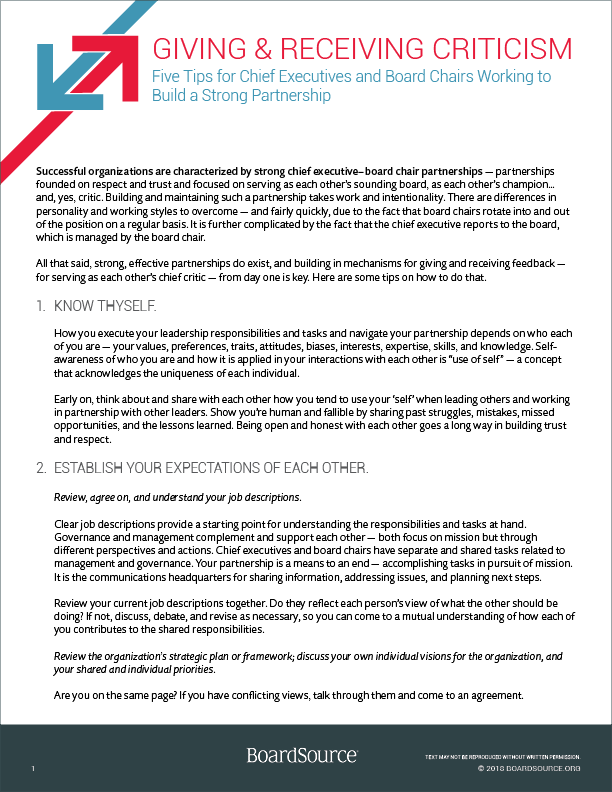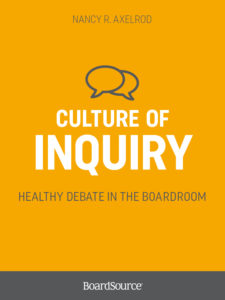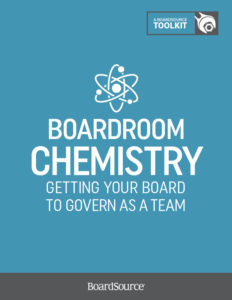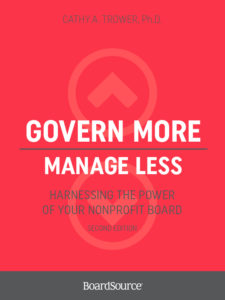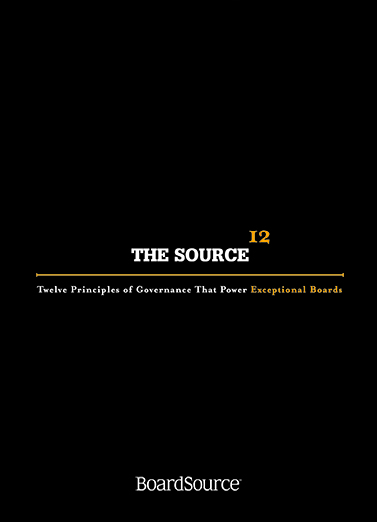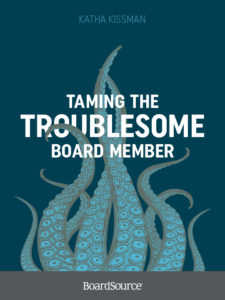Culture and Dynamics
Board culture has a significant influence on the way your board carries out its work and shapes your board’s performance.
Whether you know it or not, your board has an internal culture. How your board members communicate with each other, work as a team, and make decisions all define the culture of your board. And the nature of that board culture has a significant influence on the way your board carries out its work and shapes your board’s performance.
While there are many elements of a strong board culture, one of the most important goals is to establish what BoardSource calls a “culture of inquiry.” This means that a board fully enlists differences of opinion, unique vantage points and areas of expertise, and deep, informed questions to cultivate strong collective wisdom. By doing so, boards with this level of inquiry engage and energize their members, use meeting time productively, own and support their decisions, embrace ongoing board development and growth, and ultimately make better decisions. Without a culture of inquiry, the same board can risk group-think, inertia, disengagement, and poor decision making.
Other important characteristics of a strong board culture include
- a healthy and respectful partnership between the board and the executive
- trust and candor between board members
- thoughtful and productive resolution of issues or disagreements
- a willingness to address poor board behavior that is negatively impacting the board
A strong and positive board culture doesn’t happen on its own. It is cultivated and managed over time.
The resources listed below are designed to help your board create a constructive culture.
Quick Access:
Visual & Written Info
Guides, tools, templates, and infographics
Publications: books and toolkits
Written resources: 101, 201, and 301-level
Sign-up to receive our communications; we’re always adding new resources and will send them to you directly.
Guides, Tools, Templates, and Infographics
Personalities That Help Build a Culture of Inquiry
Members-only
Facilitating an Engaged Board
Members-only
6 Characteristics of Effective Boards
Members-only
4 Building Blocks for Inquiring Boards
Members-only
How to Remove A Board Member
Members-only
